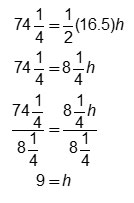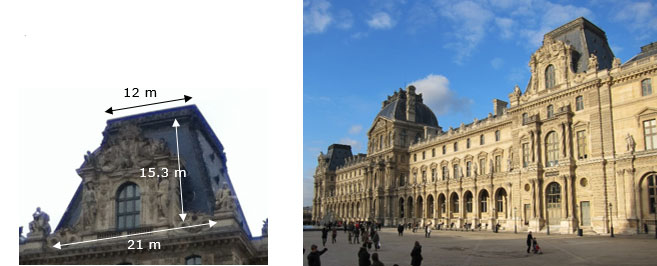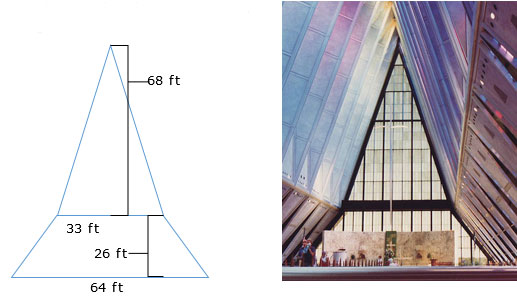In the last section, you applied the area formulas for parallelograms, including rectangles and squares, in order to write equations describing how the area formulas could be used to solve the problems. You also used those equations to determine the solutions to the problems, in some cases using a problem solving process.
In this section, you will apply the area formulas for triangles and trapezoids in order to solve application problems.
![]() Use the interactive below to match each problem situation with an equation. To make the match, drag the correct equation from the column on the right and drop it next to the appropriate problem. Use the reference materials to help you identify the area formulas if necessary.
Use the interactive below to match each problem situation with an equation. To make the match, drag the correct equation from the column on the right and drop it next to the appropriate problem. Use the reference materials to help you identify the area formulas if necessary.
Use your completed table and the interactive to answer the questions that follow.
Interactive popup. Assistance may be required.
The base is one edge of the triangle, and the height is perpendicular to the base. The height is also the shortest distance between the line containing the base and the vertex of the triangle that is opposite the base.
Interactive popup. Assistance may be required.
The two bases are the parallel edges of the trapezoid. It does not matter which base is b1 or b2. The height is the distance between the two bases and is perpendicular to both bases.
Now that you have correctly identified the equations necessary to solve each problem, use the equations to determine the solution to each of the four problems in the interactive.
![]() Click on the problem below to check your solution.
Click on the problem below to check your solution.
![]() With some word problems involving area, you can use a problem solving model to help you create and implement a plan to solve the problem.
With some word problems involving area, you can use a problem solving model to help you create and implement a plan to solve the problem.
Why do the area formulas for trapezoids and triangles include the factor 1 over 2 1 2 but the area formulas for rectangles and parallelograms do not?


Suppose a triangle has a base length of 16.5 yards and an area of 741 over 4 1 4 square yards. How could you determine the height of the triangle?



What is the area of the front face of the roof feature?


Source: AFChapel, James G. Howes, Wikimedia Commons
Write two equations that you could use to determine the area of both the triangular and trapezoidal portions of the glass window.